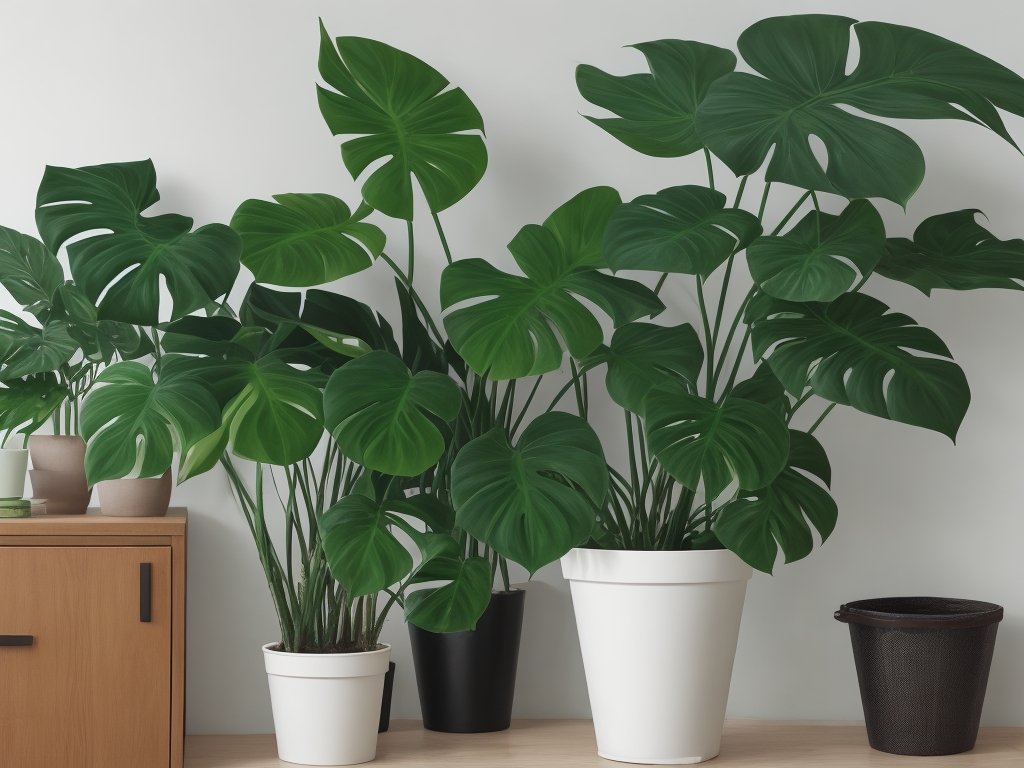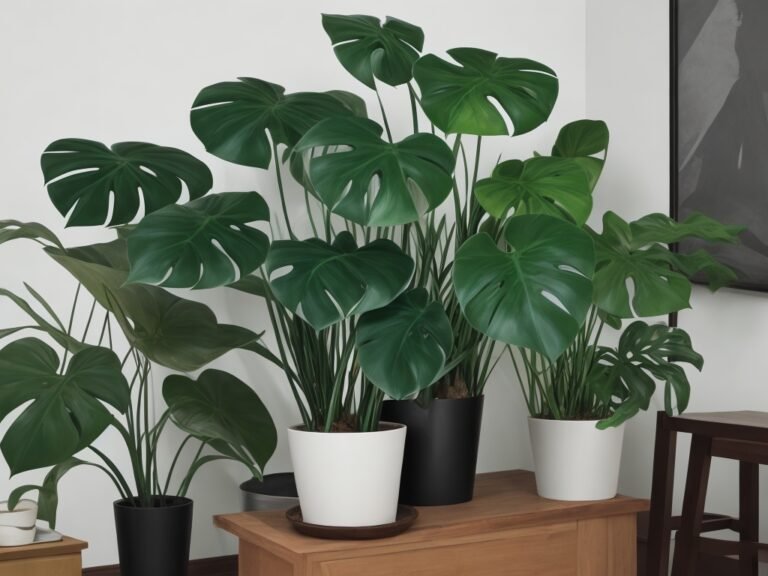How To Grow Monstera Dubia (Shingle Plant/Five Holes Plant)?
Key Takeaways:
- Monstera dubia, also known as the shingle plant or five holes plant, can be grown successfully with proper care and attention.
- Providing adequate lighting, humidity, and regular watering is essential for the healthy growth of Monstera dubia.
- Propagation of Monstera dubia can be done through stem cuttings or air layering techniques.
- Regular pruning helps to maintain a compact and bushy appearance of the Monstera dubia plant.
Are you ready to unleash your inner plant parent and dive into the world of Monstera dubia? If you’re looking for a unique and captivating houseplant to add to your collection, this shingle plant, also known as the five holes plant, might just be the one for you.
Its distinctive foliage and easy-to-care-for nature make it a perfect companion for both experienced gardeners and beginners alike.
In this blog, we’ll explore everything you need to know about growing Monstera dubia, from choosing the right conditions to propagation methods, watering and fertilizing techniques, pruning and training tips, and even how to combat common pests and diseases. Let’s get started on this exciting plant journey together!
| Aspect | Details |
| Scientific Name | Monstera dubia |
| Common Names | Shingle plant, Five holes plant |
| Watering | Keep soil evenly moist, but not waterlogged. Allow the top inch of soil to dry out before watering again. |
| Light | Thrives in bright, indirect light. Avoid direct sunlight. |
| Temperature | Between 60-85°F (15-29°C) is ideal. Avoid cold drafts. |
| Humidity | Requires high humidity. Mist the leaves regularly or use a humidifier. |
| Soil | Well-draining potting mix. Added perlite or orchid bark can improve drainage. |
| Fertilizer | Feed with a balanced liquid fertilizer every 2-3 weeks during the growing season. |
| Propagation | Can be propagated by stem cuttings or air layering. |
| Pruning | Trim off any wilted or yellow leaves. Cut back leggy growth to promote bushiness. |
| Pests | Watch for spider mites, mealybugs, and scale insects. Treat with insecticidal soap if necessary. |
| Special Features | Distinctive holey leaves. Can be trained to climb or left to trail. |
Choosing the right conditions for Monstera dubia
To ensure the healthy growth of Monstera dubia, it is important to provide the right conditions such as proper lighting, temperature, humidity, soil, and potting.
Light requirements for Monstera dubia
Monstera dubia thrives in bright, indirect light. Avoid direct sunlight, as it can scorch the leaves.
Place your plant near a window with filtered light or in a spot that receives bright, indirect sunlight throughout the day.
Remember to rotate your plant occasionally to ensure even growth and avoid it leaning towards the light source.
Ideal temperature and humidity levels for Monstera dubia
To ensure optimal growth for your Monstera dubia, it is important to maintain the ideal temperature and humidity levels.
Ideally, the temperature should range between 65-85°F (18-29°C), making sure to avoid extreme fluctuations.
As for humidity, aim for a range of 60-70%, which is on the higher side compared to other houseplants.
You can achieve this by misting the leaves regularly, placing a humidifier nearby, or using a pebble tray with water.
Providing these conditions will help your Monstera dubia thrive!

Soil and potting requirements for Monstera dubia
Monstera dubia thrives in well-draining soil that retains some moisture.
A mix of peat moss, perlite, and orchid bark provides the right balance.
Choose a pot with drainage holes and use a well-draining potting mix.
Avoid overwatering as it can lead to root rot.
Regular potting is recommended when the plant outgrows its current pot.
Propagation methods for Monstera dubia
There are three common propagation methods for Monstera dubia: stem cuttings, air layering, and seed germination.
Propagating Monstera dubia through stem cuttings
To propagate Monstera dubia through stem cuttings, you can follow these steps:
- Choose a healthy, mature plant and locate a node on the stem. Nodes are where leaves and aerial roots emerge.
- Take a clean sharp knife or shears and make a clean cut just below the chosen node.
- Remove any leaves that are close to the cutting, leaving only a few at the top.
- Fill a small pot with a well-draining soil mix and make a small hole in the center.
- Dip the cut end of the stem in rooting hormone powder to encourage root formation.
- Place the cutting in the hole and gently press the soil around it to secure it in place.
- Water the cutting thoroughly and place it in a warm, bright location with indirect sunlight.
- Keep the soil moist but not waterlogged and mist the cutting with water to maintain humidity.
- After a few weeks, roots should start to develop. You can gently tug on the cutting to check for resistance, indicating root growth.
- Once the roots are established, you can transplant the cutting into a larger pot with regular potting soil and continue caring for it as you would with a mature Monstera dubia plant.
Remember, propagating Monstera dubia through stem cuttings requires patience and proper care. With time, you’ll be rewarded with new plants that can thrive and beautify your space.
Propagating Monstera dubia through air layering
Air layering is a great method for propagating Monstera dubia. Here’s how you can do it:
- Choose a healthy stem on the plant that you want to propagate.
- Make a small incision on the stem, just below a node.
- Apply rooting hormone to the exposed wound.
- Wrap the wounded area with moist sphagnum moss.
- Cover the moss with plastic wrap to create a mini greenhouse.
- Secure the plastic wrap with tape or a rubber band.
- Keep the moss moist and watch for roots to form.
- Once roots have developed, carefully cut below the rooted section.
- Plant the newly rooted stem in a pot with well-draining soil.
- Keep the soil moist and provide bright, indirect light.
- In a few weeks, you’ll have a new Monstera dubia plant!
Remember to be patient and have a little confidence in your green thumb.

Propagating Monstera dubia through seed germination
To propagate Monstera dubia through seed germination, start by collecting mature seeds from the fruit.
Remove the flesh around the seeds and rinse them in water.
Fill a seed tray or small pots with a well-draining soil mix, and sow the seeds lightly on the surface.
Keep the soil consistently moist, but not waterlogged.
Place the tray or pots in a warm and humid environment, ideally with temperatures around 68-77°F (20-25°C).
It may take several weeks or even months for the seeds to germinate, so be patient.
Once the seedlings have emerged, continue to provide them with proper care until they are big enough to be transplanted into individual pots.
Watering and fertilizing Monstera dubia
Watering: Monstera dubia prefers consistently moist soil, so water it when the top inch of soil feels dry. Fertilizing: Use a balanced, water-soluble fertilizer diluted to half strength once every month during growing season to keep your Monstera dubia healthy.
Watering frequency and techniques for Monstera dubia
Water Monstera dubia thoroughly and allow the top inch of soil to dry out before watering again. Avoid overwatering as it can lead to root rot.
Use well-draining soil and ensure that excess water can drain out of the pot.
Mist the leaves occasionally to increase humidity.
Choosing the right fertilizer for Monstera dubia
For Monstera dubia, it’s important to choose a balanced fertilizer with a ratio of 10-10-10 or 20-20-20. You can also opt for a slow-release fertilizer.
Avoid using fertilizers high in nitrogen, as this can lead to excessive leaf growth.
Remember to dilute the fertilizer according to the instructions and apply it during the growing season.
Fertilizing schedule for Monstera dubia
To keep your Monstera dubia healthy and thriving, it’s important to follow a regular fertilizing schedule. During the growing season, which is typically spring and summer, fertilize your plant every two weeks.
Use a balanced liquid fertilizer diluted to half strength.
Make sure to water your plant before fertilizing to avoid any potential root burn. In the dormant season, which is usually fall and winter, reduce fertilizing to once every month or even less.
This will give your plant a chance to rest.
Monitor your plant’s growth and adjust the fertilizing schedule accordingly.

Pruning and training Monstera dubia
To keep your Monstera dubia in shape and size, prune regularly. You can also train it to climb or trail by providing support and guiding its growth.
Pruning techniques for maintaining shape and size
To maintain the shape and size of your Monstera dubia, regular pruning is key. Here are the pruning techniques you can use:
- Trim away any dead or yellowing leaves to keep your plant looking neat and healthy.
- If your plant is becoming too large or spreading too much, you can prune back the longer stems. Cut the stem just above a node (the point where a leaf is attached to encourage new growth.
- To promote fuller growth, you can also pinch off the tips of the stems. This will encourage branching and create a bushier appearance.
- If you want your Monstera dubia to climb or trail, selectively prune back some of the lower stems to encourage vertical growth.
Remember to use clean and sharp pruning shears to prevent damage to the plant. Pruning also allows for better air circulation and light penetration, helping your Monstera dubia thrive.
Training Monstera dubia to climb or trail
To train Monstera dubia to climb or trail, provide a sturdy support like a moss pole or trellis. Gently guide the stems towards the support and use soft ties to secure them in place.
Regularly check the growth and adjust the ties as needed.
Alternatively, you can let it trail by allowing the stems to drape over a shelf or hanging planter. Prune any excessive growth to maintain the desired shape and prevent overcrowding.

Controlling growth and preventing overcrowding
To control the growth and prevent overcrowding of your Monstera dubia, pruning is key. Regularly trim back any long or unruly stems to maintain the desired size and shape of the plant.
You can also train the plant to climb or trail along a support structure.
Another important factor is providing adequate space for the plant to grow by repotting it into a larger container when needed. Avoid placing the plant too close to other plants to prevent overcrowding.
Dealing with common pests and diseases
To deal with common pests and diseases affecting Monstera dubia, you need to identify the pests, use natural remedies for control, and prevent and treat diseases effectively.
Identifying common pests that affect Monstera dubia
Identifying common pests that affect Monstera dubia is essential for maintaining the health of your plant. Some common pests to watch out for include:
- Aphids: These small, soft-bodied insects feed on the sap of the plant and can cause stunted growth and curled leaves.
- Spider mites: These tiny pests can create webs on the leaves and cause yellowing, speckling, and leaf drop.
- Mealybugs: Mealybugs are small, cottony pests that feed on the plant sap and can cause yellowing and wilting of leaves.
- Scale insects: These pests can look like small raised bumps on the leaves and stems and can cause yellowing, stunting, and leaf drop.
- Thrips: Thrips are slender insects that feed on the leaves and can cause silvering or bronzing of the foliage.
To identify these pests, carefully inspect the leaves, stems, and undersides of the plant for any signs of infestation such as insects, webs, or sticky residue. Using a magnifying glass can help you spot any pests that may be too small to see with the naked eye.
If you notice any of these pests on your Monstera dubia, it’s important to take action to control them and prevent further damage to your plant.
Natural remedies for pest control
To naturally control pests on your Monstera dubia, you can try these remedies:
- Neem oil: Mix neem oil with water and spray it on the plant to repel pests like aphids and spider mites.
- Soapy water: Create a solution with mild dish soap and water, then spray it on the leaves to kill insects like mealybugs and scale.
- Garlic spray: Blend garlic cloves with water, strain the mixture, and spray it on the foliage to deter pests.
- Diatomaceous earth: Sprinkle this natural powder around the base of the plant to control crawling insects like ants and earwigs.
Remember to test these remedies on a small section of the plant first and monitor for any adverse effects before applying them fully. Regularly inspecting your plant and maintaining good hygiene practices can also help prevent pest infestations.
Preventing and treating common diseases in Monstera dubia
Preventing and treating common diseases in Monstera dubia:
- Avoid overwatering to prevent root rot.
- Maintain proper humidity levels to prevent leaf diseases.
- Keep an eye out for pests like spider mites and mealybugs.
- Regularly clean and inspect the plant for any signs of disease.
- Treat diseases with appropriate fungicides or insecticides, following instructions carefully.
- Quarantine new plants to prevent the spread of diseases.
- Provide adequate airflow and sunlight to promote overall plant health.
Frequently Asked Questions
How fast does Monstera dubia grow?
Monstera dubia is known for its slow growth rate compared to other Monstera species.
On average, it grows about 1-2 feet per year under optimal conditions.
However, various factors such as light, temperature, humidity, and care practices can affect its growth rate.
Patience is key when it comes to growing Monstera dubia.
Can Monstera dubia survive in low light conditions?
Monstera dubia can survive in low light conditions, but it won’t thrive. It prefers bright, indirect light to grow and develop its unique foliage.
If you keep it in low light, the plant may become leggy and its leaves may lose their vibrant color.
So, it’s best to provide it with adequate light to ensure its overall health and beauty.
How often should I repot Monstera dubia?
You should repot your Monstera dubia every 2-3 years or when it becomes root-bound.
Look for signs like roots poking out of the drainage holes or slow growth.
Use a pot that is one size larger and fresh, well-draining soil.
Be gentle when repotting to avoid damaging the delicate roots.
Can Monstera dubia be grown outdoors?
Yes, Monstera dubia can be grown outdoors, but it is best suited for warm and tropical climates.
It thrives in bright indirect sunlight and requires high humidity levels.
Ensure it is protected from strong winds and extreme temperatures.
What are the common issues faced when growing Monstera dubia?
Common issues when growing Monstera dubia include:
- Insufficient light: Lack of bright, indirect light can lead to slow growth and the plant’s leaves losing their characteristic fenestrations.
- Inadequate humidity: Monstera dubia thrives in humid conditions and may suffer from dry air, resulting in brown leaf tips and edges.
- Improper watering: Overwatering can cause root rot, while underwatering can lead to yellowing and drooping leaves.
- Inappropriate soil and potting: Using heavy or poorly draining soil can cause waterlogged roots, leading to root rot. Additionally, using pots without proper drainage can exacerbate the issue.
- Pests and diseases: Monstera dubia can be susceptible to pests like spider mites and mealybugs. Diseases such as fungal infections and bacterial leaf spot can also affect the plant.
Addressing these issues by providing adequate light, maintaining proper humidity, watering correctly, using well-draining soil and pots, and implementing pest control measures will help ensure the healthy growth of Monstera dubia.
Final Verdict
Growing Monstera dubia (shingle plant/five holes plant) requires careful consideration of its light, temperature, humidity, soil, and potting requirements. Propagation can be done through stem cuttings, air layering, or seed germination.
Proper watering and fertilizing techniques are crucial for its health and growth.
Pruning and training can help maintain its shape and prevent overcrowding. Dealing with common pests and diseases can be achieved through identification, natural remedies, and preventive measures.
By following these guidelines, you can successfully cultivate and enjoy the beauty of Monstera dubia in your home or garden.






